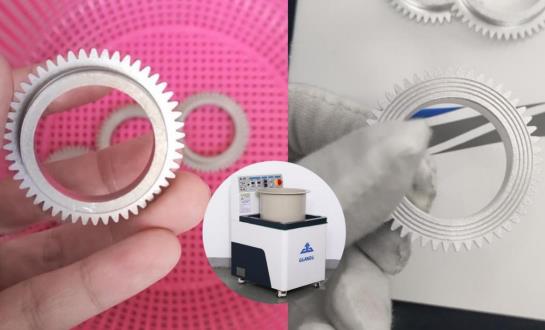For deburring shaft parts, the following is a common method of operation:
Grinding: Use tools such as sandpaper, grinding wheels or grinders to grind shaft parts to remove burrs. Sandpaper or grinding wheels of appropriate thickness can be selected and sanded along the surface of the shaft. Take care to maintain consistent direction and pressure to avoid creating new burrs.

Mechanical grinding: Use professional mechanical equipment, such as grinding machines or grinding heads, to perform precision grinding on shaft parts. These devices can provide higher precision and smoother surfaces to remove burrs and improve shaft quality.
Hob or Scraper: Use a specialized hob or scraper to roll or scrape the burrs along the surface of the shaft. These tools have sharp cutting edges that effectively cut or flatten burrs. Make sure to work the hob or scraper along the axis and move gradually until the burr is completely removed.
Chemical Treatment: Certain chemical methods can also be used to deburr shafts. For example, use chemical solvents or acid solutions to etch or dissolve burrs. However, this method needs to be used carefully to avoid damage to the shaft material and to follow safe operating procedures.
Magnetic polishing of precision parts
Ultra-precision polishing is a surface treatment process used to achieve a very high finish and precision. Here are some common steps and techniques used for ultra-precision polishing in general:
Surface preparation: Before ultra-precision polishing, it is first necessary to ensure that the surface of the workpiece is clean and free of impurities. This may involve steps such as washing, removing residues and coatings to ensure the surface is clean before commencing polishing.
Rough polishing: Use coarse abrasives or grinding tools to perform preliminary polishing on the surface of the workpiece. This step is intended to remove surface roughness and blemishes. Rough polishing can be done with a grinder, emery wheel or other abrasive equipment.
Effect of magnetic polishing machine
Fine Polishing: After rough polishing, use a finer abrasive or lapping tool for a finer finish. This step is aimed at further reducing surface roughness, improving planarity, and reducing possible blemishes. It may be necessary to use finer abrasives and smaller sized grinding tools.
Passivation: During polishing, some minor surface changes or localized discoloration may be introduced. In order to eliminate these problems, passivation treatment can be performed. This step uses chemical or electrochemical methods to remove or adjust the metal oxide layer on the surface of the workpiece to obtain a uniform surface.
Cleaning and Inspection: After ultra-precision polishing, the workpiece is thoroughly cleaned to remove abrasive particles, grease or other contaminants that may remain on the surface. Careful inspection is then carried out to ensure that the surface flatness, finish and precision are as required.
Coating or coating (optional): According to the specific requirements of the workpiece, coating or coating can be selected after ultra-precision polishing to increase the wear resistance, corrosion resistance or other special properties of the surface.
Ultra-precision polishing is a delicate and complex process that requires specialized equipment, materials and techniques. In actual operation, it is best to rely on professional polishing service providers or manufacturers, who have rich experience and expertise, and can provide you with high-quality ultra-precision polishing services according to specific needs.










You must be logged in to post a comment.